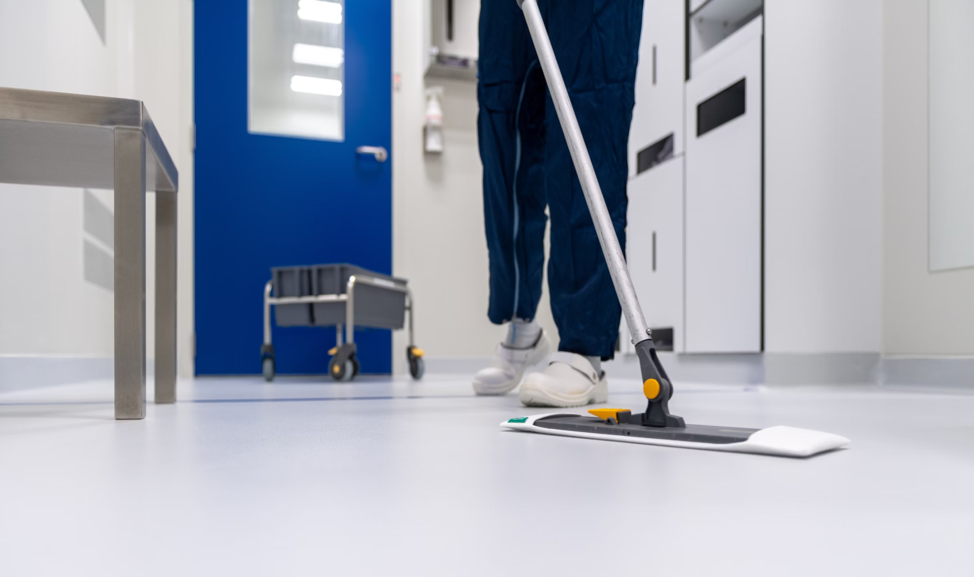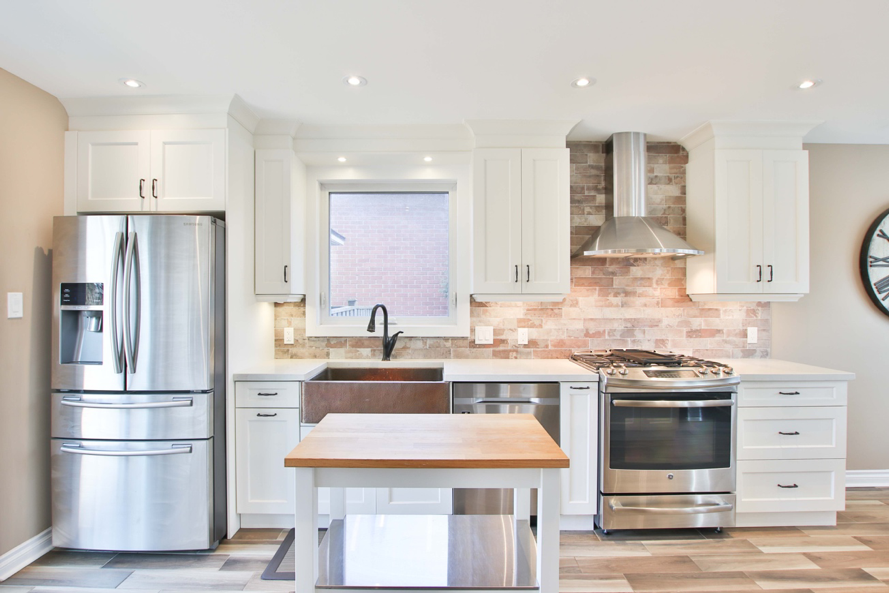When it is time to clean, many people do not take the time to factor in the type of cleaning equipment for the surfaces or areas they are cleaning. Maintaining a squeaky-clean home is far more than just chemicals used for cleaning. Cleaning equipment comes in various sizes and brands and is designed for multiple applications. Don’t cut corners.
From the stainless-steel counters in diner kitchens to the glass windows of office buildings, each surface needs unique cleaning equipment best suited for each environment. Using the wrong cleaning tools can cause poor cleaning results on surfaces. It can even ruin them or put human health at risk in the long run.
This post will help you better understand the cleaning tools suitable for each possible type of surface.

Image source: unsplash
Common Different Surfaces in Different Settings
There are many different types of surfaces when cleaning, just as there are various settings. A suitable cleaning equipment/ surface cleaner will save you time, water, and effort. Some basic settings are schools, shops, restaurants, homes, offices, factories, etc., and distinct surfaces in these different settings can be categorized as:
- Hard or stone surfaces: These are ceramic tiles, glass, concrete, marble, and granite.
- Wood surfaces: can be found as hardwood flooring, kitchen and vanity cabinetry, furniture, bookshelves, and countertops.
- Soft surfaces: They are carpets, fabric, and rugs.
- Metal surfaces: Materials such as stainless steel.
HARD OR STONE SURFACES
1. Ceramic tiles
They are the most widespread because of their cool surface feel. They are used on backsplashes, floors, countertops, shower stalls, and walls. Ceramic tiles clean easily and do not require extreme chemicals. You want to be careful to guard the finish of the tiles, but the tiles will gather dust in their embossed designs and in any cracks left behind by missing grout.
Cleaning Equipment
- A cloth moistened with warm or hot water can wipe away dirt or stains from the tile surfaces and the grout between the tiles. You can use a soft-bristle brush with water and laundry detergent. Still, it’s paramount to ensure that the detergent used is not overly abrasive, like a mild all-purpose cleaner, to prevent probable damage to the color and pattern of the tiles.
- In the shower or tub, use a squeegee to release excess water and soap scum to keep ceramic tiles free of water spots and soapy film.
- You can clean farmhouse fireclay sinks or other ceramics with soap or calm cleansers.
2. Glass

Image source: unsplash
This is a staple in office buildings for windows, doors, etc., and in the household, whether for tabletops, cooktops, or even some counters. For the ideal cleaning equipment for different surfaces, glass surfaces are a popular choice for modern aesthetics, as they allow optimal light. They are very durable but can be scratched or etched easily, and are one of the most demanding surfaces to keep clean in any home.
Cleaning Equipment
- Use a spray cleaner particularly formulated for glass cleaning to remove dirt stains, keep these surfaces sparkling clean, and not leave behind streaks. Wipe them with a clean, lint-free cloth like a paper towel.
- You are not to use abrasive cleaners, bleach, or dirty clothes as they can potentially cause endless damage to the surface or leave behind a stinky residue.
- For glass shower doors, do not use your ordinary bathroom cleansers. They are too abrasive and leave streaks. Instead, to maintain the doors sparkling clean, use the tile squeegee trick to clean out soap scum and water at the end of each shower.
- Glass cooktops are delicate, so use a glass-top stove cleaner.
3. Marble
Marble is a naturally soft and porous surface, requiring more care than other materials. It gets stained pretty easily.
Cleaning Equipment
- Using a special cleaner made for marble and natural stone surfaces will be satisfactory. Anything else can either stain the surface or cause pitting.
- Use mild soap and water only for daily cleaning. Avoid acidic products like lemon juice or alcohol, as they can stain when applied on a marble surface. The same goes for acidic cleansers.
4. Granite
Ammonia, non-chlorine bleaches, and abrasive cleaners can easily damage granite surfaces.
Cleaning Equipment
- Use a mop or soft clean towel to apply the cleaning solution to granite surfaces.
- Wipe counters with a sponge or soft cloth dampened in warm water and mild dish soap.
- Have a spray bottle on the side for periodic solution mixtures like a 50:50 blend of 91% isopropyl alcohol and water to disinfect your granite.
5. Concrete Floors
They are far too durable and standard in most houses. Here is how to understand to select the cleaning equipment for different surfaces.
Cleaning Equipment
- The best for an easy clean is to use a broom for sweeping, a vacuum cleaner, and a mop.
- Avoid using acidic cleaning solutions or polishes for sealed concrete floors, as they may cause damage.
WOOD SURFACES
Dust and dirt can accumulate on wood, making it look dull and lifeless, and wood counters can get germs that make you sick. So, wood countertops must be properly maintained and sealed regularly.
Cleaning Equipment
- Dust regularly using a microfiber duster or soft cloth on furniture to prevent abrasions on peculiar wood grain. Add a little drop of solution to a bucket of water to wipe down your wooden surfaces for deeper cleaning.
- Avoid applying water on cabinets, as it can damage wood if not wiped down immediately. Instead, use a wood-safe cleaner with a soft cloth to wipe down your cabinets.
- Detest from using steel wool, rough fabrics, harsh cleaning chemicals, or scouring pads to wipe up the furniture, as they can destroy the polish.
1. Hardwood Flooring
Hardwood flooring can display a cordial and welcoming ambiance for customers and visitors in shops and offices. This makes it a widespread choice in retail spaces and corporate environments. However, the upkeep demands attention to detail. The more people set foot on your floors, the more frequently you need to clean. Because dirt and grime, especially, can make your wooden floors look dull.

Image source: Unsplash
Cleaning Equipment
- With a broom, sweep your floor regularly to dispose of debris.
- Apply a vacuum cleaner on the surface area with a gentle brush head when needed.
- After liquid or sticky spills, use a damp (not wet) mop head and mild detergent. Always dry the floor after you mop it, as wood can rot in moist environments.
- Use non-harsh chemicals such as eco-friendly cleaning products on this surface to not destroy the hardwood.
- A nylon cloth can tackle tough stains on the spot or material dampened with dishwashing soap.
- Don’t use a steam cleaner for hardwood floors or vacuum heads that may scratch your floor.
- Don’t use abrasive cleaning products on the wood, especially if it has a lacquered finish.
SOFT SURFACES
They are often used for furniture and upholstery.
1. Carpet

Image source: Unsplash
Cleaning Equipment
- Use your vacuum cleaner to pick up dust, hair, and other particles. This removes any germs sitting on the surface.
- Clean the carpet surface with soap and water or with cleaners formulated for carpets for the best result, especially for spot treatment.
- For deep cleaning, use a thorough steam cleaner every half year. Employ a carpet cleaning machine with a concentrated cleaner.
- For minor stains and pet messes, start with spot treatment using the appropriate cleaner. Be quick so the stain is not absorbed into the carpet’s fibers.
- For difficult stains, blot with either a washcloth or paper towel. This soaks up any excess liquid instead of scrubbing it deeper into the fabric.
METAL SURFACES
They are sustainable, cost-effective, high-performance materials that can dazzle the built setting, such as walls, cladding, etc. They are often used for fixtures, appliances, and hardware.

Image source: Unsplash
1. Stainless Steel
Commonly used in home and restaurant kitchens for their anti-corrosive and easy-to-clean properties, stainless steel surfaces require particular cleaning equipment and products to maintain shine and prevent water spots. It is very heat resistant, durable, and can take a mirror-polished finish. But this material can begin to look worn if not maintained correctly.
Stainless steel applications include cutlery, protective paneling, sanitaryware, furniture, trays, sinks, WCs, and cooking utensils.
Cleaning Equipment
- Clean daily with a sponge dipped in warm water and dish soap.
- Use a neat microfiber cloth with warm water to wet, dirty steel surfaces, followed by a tidy material immersed in dish soap and warm water. This will loosen food and remove the mess without damaging the steel.
- Use a stainless-steel appliance cleaner and polish to clean stainless steel appliances and surfaces like kitchen counters quickly and easily.
- It’s essential to avoid abrasive pads to ensure the finish is not damaged.
- Scouring pads can carefully wipe away dirt from a stainless-steel sink. If rust stains are visible, use iron remover, and apply it intensely using a scouring pad.
- Silver-dip solutions, acidic solutions, salt-vinegar mixtures, and excessive heat can harm stainless steel. So, for stains, make a paste by mixing baking soda and water, apply it to the stainless steel with a rag, and use a soft-bristled brush. Apply in the grain’s direction.
Conclusion
Cleaning can be time-consuming, and you want to make sure it is not any more problematic than it should be. Different surfaces or areas require various cleaning equipment. For example, a floor with carpet may need a vacuum cleaner, while a hard floor might require a floor scrubber or a mop. Think about the particular surfaces or areas you need to clean and choose equipment designed for those purposes.
- Manual vs. Automated Cleaning Equipment: Which Should You Choose? - December 15, 2023
- Cost Efficiency of Investing in Professional Cleaning Equipment - December 8, 2023
- Safety Precautions When Using Professional Cleaning Equipment - November 26, 2023
